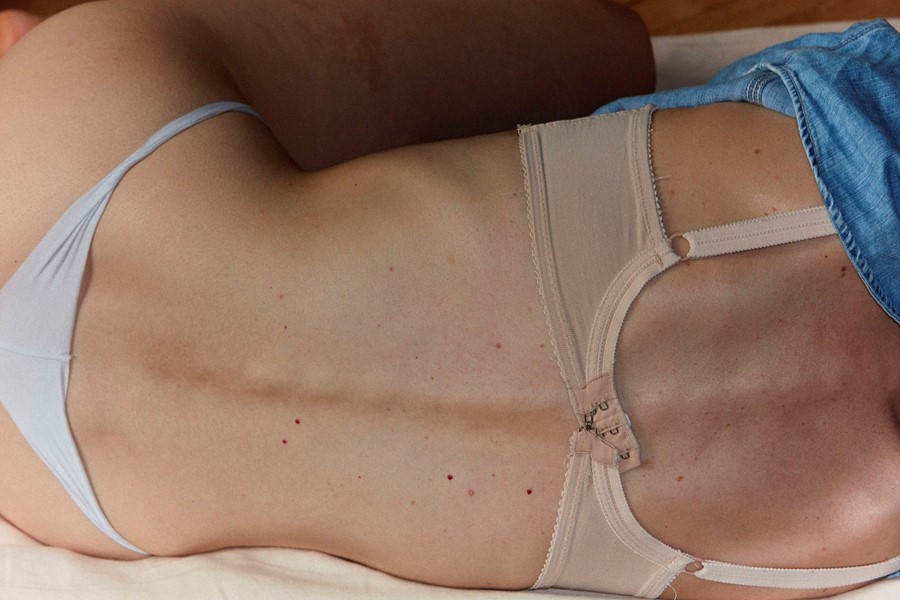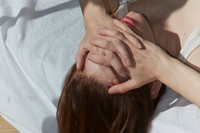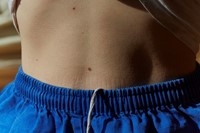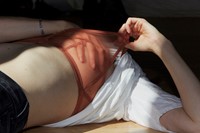The French photographer’s new book features a series of languorous images taken of his partner Armelle during lockdown in their small Parisian apartment
In The Poetics of Space, the philosopher Gaston Bachelard equates small, intimate spaces with expansive psychologies. The corners of our homes, far from being imprisoning, in fact create room for us to daydream; to reach states of profound reverie and expansive temporalities; to give life to poetic images.
Such might be the thesis of Inner, the latest photobook from French photographer Vincent Ferrané. Published by Art Paper Editions, the work features a series of 48 images taken of his partner, Armelle, in their relatively small Parisian apartment. Produced during lockdown (a time when confinement was not an artistic luxury, but a legal obligation), the images – languorous and atmospheric – show Armelle in interstitial states of repose and undress, “calm, leisured moments of everyday life,” Ferrané tells AnOther.
Whereas Ferrané’s previous series – which documented the beauty routines of trans women and women artists in their studios – involved a great deal of “anthropological and sociological research”, with Inner, the process was more organic, initiated by the couple’s sheer proximity. “The research took place as the photos were taken … we refined the process in doing it,” he says. The pair took photographs at the same time every day, between 11am and midday, when the sunlight would come through their window in a particularly striking way. He describes the process of shooting as a “game of ping pong”, where Armelle – who he had previously captured breast-feeding their son in his 2017 series Milky Way – would suggest poses that he would respond to. In doing so, Ferrané creates a document of her quotidian gestures: “her particular way of tying up a T-shirt” or a “bra clasped incorrectly”. The slow time of lockdown even seems imprinted on her body, with red marks from an elastic waistband on her stomach or armpit hair, perhaps more overgrown than usual.
The series recalls the work of Egon Schiele for the way Armelle’s body is cropped and contorted, viewed from behind or turned upside down, and the kink of the clothing (Ferrané cites Roland Barthes’ famous dictum: “Is not the most erotic portion of a body where the garment gapes?”). Yet the images’ eroticism is not straightforward, and is often difficult to read. In one image of Armelle’s torso – dewy with water vapour after a shower – she holds onto her ribs (a zone that is not traditionally erogenous). Her trousers are undone, “which could be a kind of come-on” says Ferrané, but her stomach, held in, suggests the inhalations of yoga. In other photos, he points out the prominence of her veins or the masculinity of her pose.
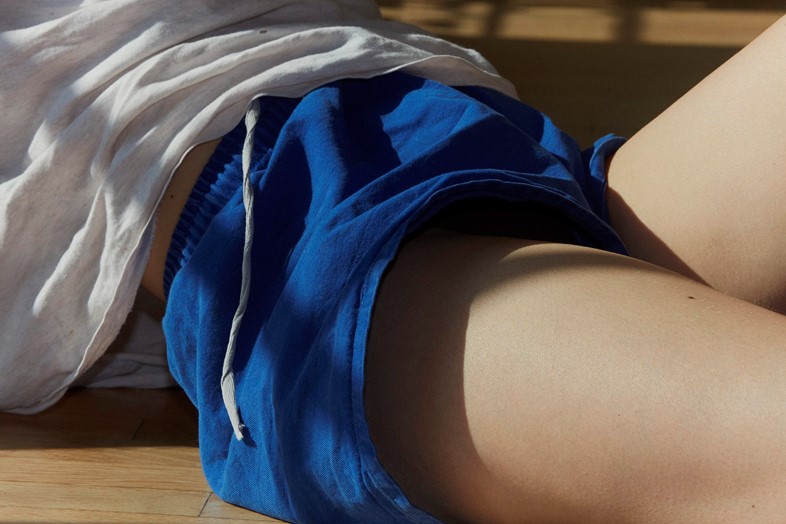
While, on the one hand, Ferrané sees his photographs as “archetypal of the photography of intimacy” – with hallmarks such as their naturalism, sense of closeness and the photographer’s embodied presence – he has also “brought in subtleties and paradoxes” which create distance. The Armelle we see, while close, is also closed off, her eyes always squinting, closed or covered by hair, her moments of private reverie and her inner space inaccessible to both us and the photographer. Despite the size of their apartment, Ferrané used an extreme zoom lens for the series. He describes the effect as a “flattening of perspective, as if photographing something far away that you don’t know, like a bird or a paparazzi shot”.
Inner by Vincent Ferrané is published by Art Paper Editions and is out now.
